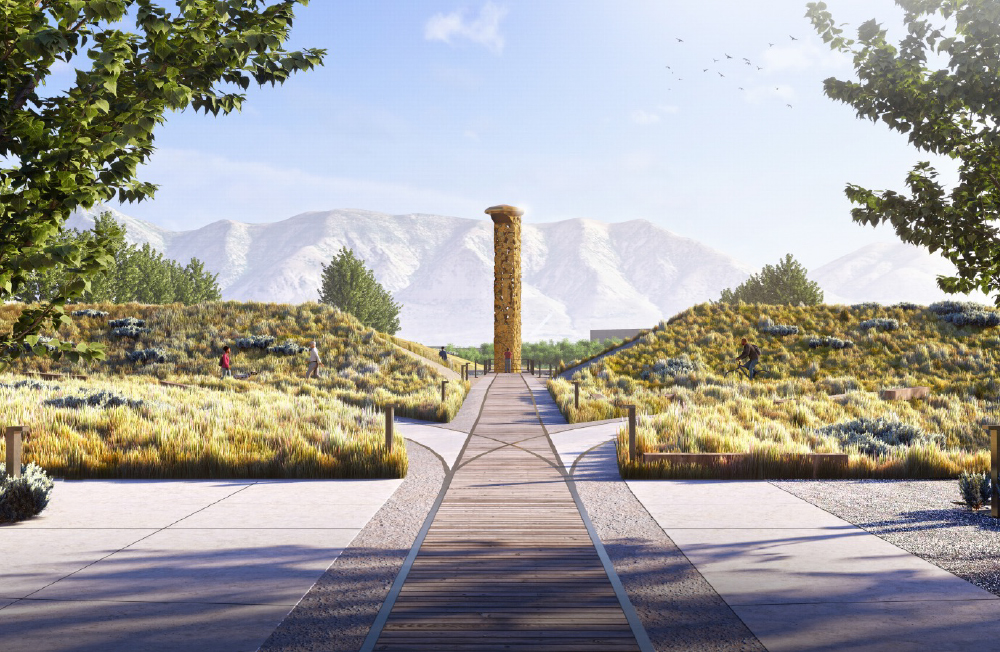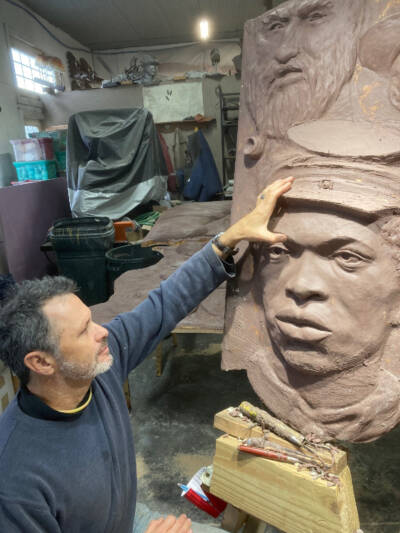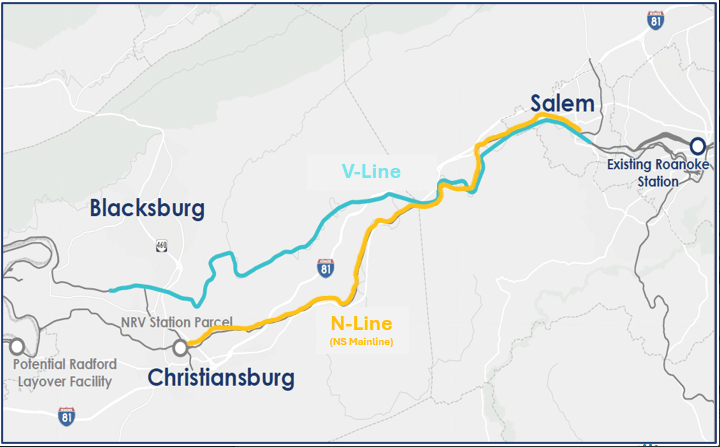
SALT LAKE CITY — Today, at the Kentucky studio of sculptor Douwe Blumberg, a crane gently lifted a gold spike measuring 43.3 feet long and weighing just under 7,000 pounds, onto a decorated semitrailer. The spike, commissioned by Utah’s Golden Spike Foundation, is a new memorial commemorating the workers who built the Transcontinental Railroad. Starting Oct. 5, the spike will travel to Utah making nine event stops en route. Ultimately, this new piece of public art will be installed in Golden Spike Park at Reeder Ranch, in Box Elder County, Utah, outside of Brigham City along Interstate 15.
Along the route to Utah, the golden spike will make stops at:
- Oct. 5: Kickoff event – The Henry Clay Estate, Lexington, Ky.
- Oct. 7: Whistle stop – St. Louis Union Station, St. Louis, Mo.
- Oct. 8: Whistle stop – Union Station Kansas City, Kansas City, Mo.
- Oct. 14: Whistle stop – Union Pacific Railroad Museum, Council Bluffs, Iowa
- Oct. 15: Whistle stop – Golden Spike Tower, North Platte, Neb.
- Oct. 17: Whistle stop – Colorado Railroad Museum, Golden, Colo.
- Oct. 21: Whistle stop – Cheyenne Depot Museum, Cheyenne, Wyo.
- Oct. 23: Whistle stop – Community Art Center, Rock Springs, Wyo.
- Oct. 24: Welcome event – Utah state capitol, Salt Lake City, Utah

Until the Transcontinental Railroad’s 150th anniversary in 2019, the complete story of the railroad’s construction had gone largely untold. The contribution of the thousands of workers had been ignored. The Golden Spike Foundation, who organized the Spike 150 celebration in Utah, wanted to ensure the entire story was told. After the celebration, the foundation commissioned Douwe Blumberg to build the Golden Spike Monument as a way to continue telling this remarkable and relatable story through public art.
The new monument, which took 28 months to craft, portrays images of railroad workers in bas-reliefs along the four sides of the giant golden spike. According to Blumberg, the artwork is intended to “give faces to the faceless” and celebrate the building of the railroad from the perspective of those who contributed so much to the triumphant feat. The workers, many of whom were immigrants attracted by steady employment, did back-breaking work, made horrific sacrifices, and used ingenuity to make the railroad a reality.

The faces of 74 people appear on the monument. Blumberg drew them from diverse backgrounds after consulting with Transcontinental Railroad historians, groups representing railroad workers, and conducting his own research. The faces include Chinese laborers from the Central Pacific Railroad, Civil War veterans, newly freed African-Americans, Irish and other immigrants, and members of The Church of Jesus Christ of Latter-day Saints.
An aluminum interior structure supports the new golden spike. The exterior is clad with gold leaf and coated with a thick, protective wax. Why was 43.3 feet chosen as the height of the monument? That happens to be the square root of 1869, the year the Transcontinental Railroad was completed. This is just another uncoverable fact that lies within the new artwork’s story.
As an artist, Blumberg has completed more than 200 private and public commissions. His work has garnered numerous awards. Past commissions include: the Las Vegas Veterans Memorial, and the “America’s Response” Special Operations Monument placed near Ground Zero in New York. Blumberg was born in Los Angeles and studied at California’s Idyllwild School of the Arts and Music. He was among 229 artists who submitted proposals for the monument. Artists in 39 U.S. states, Canada, France, Japan, and Spain expressed interest in completing the commission.














With this route people can see two Golden Spike monuments. The GS monument at Council Bluffs which marks the starting point of the UP and the GS headed to Utah.
There is already a Golden Spike National Monument in Utah, near Promontory Summit Northwest of Ogden, UT. This monument, as explained is not about the railroad, but about the actual people who built it; Irish, Chinese and Mormon immigrants as well as a few other cultures.
I can see that it will be easier to set up public displays from a truck, however it would have been nice to see a monument to railroad workers moved on a train.
I concur, a railroad monument transported by truck! How ironic!
While it is ironic that it is traveling by truck. the intent was to tell the story of the people who did the “grunt” work, sometimes at the peril of their own lives, to make the original national “Transcon” happen. It isn’t at all about the railroads. They’ve already had their glory many times over. But workers have had very little made of them, except for maybe their supervisors.
This transport will be more convenient for the public and will only be about the efforts and sacrifices of the workers, without the distraction of a train or locomotive. I for one am proud of the decision and to be a member of the Golden Spike Empire.
43.23 is closer to the square root of 1869. To be precise more like 43.23193264243457. With rounding it is 43.2. That is why one has to question what is put out there in this day and age. I checked with my phone’s calculator app, so it is painfully easy to find the discrepancy.
One question: does the discrepancy really matter or make a difference in the big picture?
The number is close enough. I think we should worry more about admiring the fact that some group, after all these years, is finally giving several thousand people, lost to history, our respect and their due. And the value of that effort can’t be calculated…
Great sculptor Douwe Blumberg is the right choice for the said great monument.
Dr. Güntürk Üstün
Seems to me that there should be some exhibit locations on the Central Pacific side, not just the UP side prior to final placement. After all, it’s supposed to represent all the workers.
Sadly, I-15 goes by Brigham City, which is the biggest town close to the monument up the hill, to which most people wouldn’t go. They might stop to see a big spike on the side of the road close by., though. Remember, too, that although the UP and the CP both built roadbeds down the east side of the mountain down to Cochran (sp) the UP’s grade was superior, which is why the CP bought it and abandoned their own soon after the Promontory festivities had ended. I So, the new spike and park are actually on the CP side, which extended all the way to Ogden.